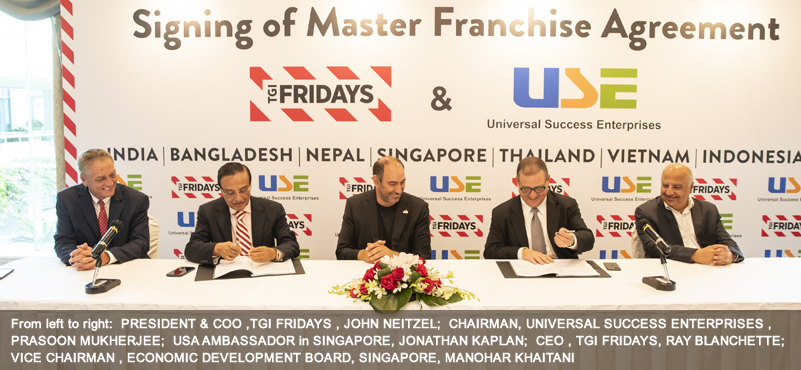Trends in the luxury segment point towards a definitive shift towards old-school ways of hospitality and service. Julie Wagner, CEO, Beverly Hills Conference and Visitors Bureau believed that personalized intimate service coupled with the advent of luxury players in the online space were two of the most important aspects of the unfolding story.
 From a Spanish ranch meant for growing Lima Beans to a futile exploration for oil by some adventurous investors at the advent of twentieth century, the city of Beverly Hills has had its share of successes and failures before it formidably positioned itself as one of the most sought after addresses in the world. Located in the Los Angeles County of California, this five square miles of uber luxury houses some iconic hotel properties, diamond five star category hospitality accommodations, and every major international luxury brand on the planet. Aside the likes of the Beverly Hilton and Montage, The Waldorf Astoria is going to come up with a stunning property in 2017; an eleven story hotel with a roof-top swimming pool.
From a Spanish ranch meant for growing Lima Beans to a futile exploration for oil by some adventurous investors at the advent of twentieth century, the city of Beverly Hills has had its share of successes and failures before it formidably positioned itself as one of the most sought after addresses in the world. Located in the Los Angeles County of California, this five square miles of uber luxury houses some iconic hotel properties, diamond five star category hospitality accommodations, and every major international luxury brand on the planet. Aside the likes of the Beverly Hilton and Montage, The Waldorf Astoria is going to come up with a stunning property in 2017; an eleven story hotel with a roof-top swimming pool.
It is fitting, therefore, that Beverly Hills Conference and Visitors Bureau has come up a comprehensive report on evolving and future trends of the luxury space. “In order to be open to innovation and fresh perspectives, we have come up with findings. It will help us identify emerging trends and help us better understand the impact of technology on the consumer behaviour,” said Julie Wanger, CEO, Beverly Hills Conference and Visitors Bureau.
Informing that, in terms of market size, the global luxury market exceeded 1.1 trillion USD in spending in 2014 – which was lead by automobile and hospitality segment, she said that “another interesting development has been the growth of online players in the luxury space which was not a trend few years ago.”
Speaking about the growth of travelers to Beverly Hills, and especially from the Asian region, she noted that the growth rate from China had been huge for them, helping her in figuring out the kind of markets they wanted to target. “The other factor that helps us decide the strategy, in terms of the international markets we focus on, is how and where our competitors are showing up,” she said.
Taking stock of the global environment, she outlined that Monaco and Nepa Valley were some important luxury destinations. “But, we look at markets only in Los Angeles because a lot of them have five star hotels or a destination that has good offerings; certainly not with the same variety and array of products that we offer. But, they are formidable enough. So, we do look at Santa Monica, West Hollywood, Downtown Los Angeles, Orange County, and a little bit of Hollywood,” she said.
Noting that, internationally, there were big cities that had created a niche for themselves in the luxury segment. “Paris, for instance, is a huge destination for luxury shopping. Especially now, it is cheaper to buy when the dollar has increased in value; people have been scared, though, with all kinds of activities that has been going on off late in Europe. But, all said and done, France is a serious luxury destination,” she said.
To her own admission, China remained the most important market for Beverly Hills. Speaking on the current influx from Chinese markets, she said the growth from Chinese market was going through the roof. “It has been a double digit growth for quite a long period of time. The growth may have slowed or flattened a little in the recent months, it still translates into a huge amount of money for us,” Julie Wagner said. She added that other markets like Brazil or Russia where the economy had not been so buoyant, the growth had flattened or even decreased, but the amount of money spent was no longer impactful. “The amount of money spent by Chinese travellers in Beverly Hills is significantly higher,” she reasoned.
Speaking on India’s prospect of emerging as a key source market for Beverly Hills, she candidly admitted that she was not sure if India could replace China as a leading source market. “I do not see that happening in the near future, but it surely can become an important market in the coming years. The opportunity is definitely here with such a huge number of people and higher disposable incomes,” she said. She hoped that robust air-linkages to the USA from Middle Eastern countries was going to help make travel a lot more accessible.
Julia Wagner’s assertion on the fact that China remained a strong pillar of Beverly Hill’s source markets can be better ascertained from the data revealed in the luxury report compiled by the bureau. As per the report, China has the fifth largest number of ultra-rich consumers, behind the USA, Japan, the UK and Germany, with a majority of its billionaires living in Beijing, Shanghai, and Shenzhen. Importantly, the combined Asian UHNWIs now hold more total wealth (estimated at 5.9 trillion dollars) than those in North America estimated at 5.5 trillion dollars, the report says. Set to be the largest economy in the world by 2024, according to the 2015 Hurun Report, Greater China (including Hong Kong, Macau and Taiwan) is currently home to 715 US dollar billionaires.




































